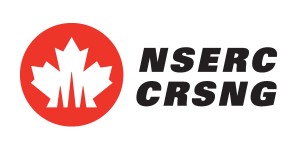Engineers In Scrubs
A launchpad for innovation.
The EiS Program
The first of its kind in Canada, the Engineers in ScrubsⓂ (EiS) program teaches biomedical engineers to navigate the interfaces between engineering and medical research, clinical practice, and product development. Through the program, students receive significant training in hospitals and various clinical environments.
It provides students with a unique opportunity to observe and interact with health care providers across a broad clinical spectrum. The program was founded in 2011 by Dr. Antony Hodgson to train graduate students to become leaders in medical innovation and make meaningful impacts on patient health and healthcare.
Have a potential project idea?
Are you a clinician with a potential project you’d like to pursue through the program? If so, follow the link below to learn how.
Program Structure
EiS students follow a slightly modified curriculum. They take a number of the regular BME graduate courses, but also take the following courses in partial satisfaction of the BME core course requirements:
Course No. | Course | Credits | Term |
|---|---|---|---|
BMEG 500 | Orientation to the Clinical Environment | 1 | 1 |
BMEG 501 | Interdisciplinary Team Project in Medical Innovation | 4 | 1-2 |
*BMEG 590 was part of the EiS curriculum prior to 2019W. Beginning September 2019W it is no longer offered. |
Courses
BMEG 500
In this 1-credit course, students spend time in a series of interactive tours of selected sites, covering topics such as the organization of the hospital, the roles of various personnel, a tour of several major departments and facilities at Vancouver General Hospital (with special focus on the BME-related research laboratories, clinical engineering facility, and sterile processing department), the Medical Device Development Centre (an incubator facility for medical device start-up companies), the Centre for Comparative Medicine, and an introduction to the prototyping facilities at the Medtech Development Hub (which will be accessible to EiS project teams). In addition, students will be paired with a selection of clinicians and allied healthcare workers for a shadowing experience. The primary purpose of this experience is for the students to develop an understanding of the day-to-day operations and priorities of the various healthcare workers, and what problems could be solved with/by a biomedical engineer.
BMEG 501
This is a 4-credit, eight-month course in medical technology innovation which will bring together EiS students and clinicians (physicians, nurses and other allied health professions), end users (patients and caretakers), business experts (medical device entrepreneurs and venture creation specialists) and engineering professors in a formal process of clinical problem identification and prioritization, which will lead to ideas for interdisciplinary team projects to be conducted over the academic year. In a series of clinical engagement workshops, the students will be exposed to a range of clinical problems, on which they will perform structured research and apply a formal process of needs filtering to identify the most compelling project for each team. The team projects will be based at the hospital, so trainees will have an exceptional opportunity to engage with clinical personnel and seek their input at all stages of the design, development, and testing processes. In addition, students will have access to medical device prototyping equipment and knowledgeable technical personnel through a network of machine shop facilities. Through this course, students will develop a practical understanding and appreciation of the many considerations involved in developing technology to address clinical needs.
Program
Important Information
The EiS program simulates a professional environment and its courses are not as rigidly structured as most other courses. Uncertainty is part of any realistic technology development process. Students must learn to drive the process, be proficient in working in (potentially preassigned) teams and with other stakeholders, while developing technology that may not be familiar to them. Students with good leadership skills and the ability to self-moderate tend to do well in EiS.
Due to the need to accommodate the schedules of the tour sites, clinicians, and other stakeholders, some of the course activities will need to take place outside of the regular class time. The TAs will work with the class to avoid scheduling conflicts, but the students are expected to be as flexible as possible. Teams are also expected to schedule their own meeting times as needed.
Eligibility
The EiS program is normally only open to Biomedical Engineering students in their first year of their graduate program (MASc/MEng/PhD). Students who have completed more than 12 months of their program are typically ineligible. This program is only open to Biomedical Engineering students. Student in other departments are not eligible for the EiS program.
Application
Applications are accepted for those who’ve applied for the September intake of the Biomedical Engineering graduate program.
In the news
Biomedical Breakthroughs in Vancouver
Patient care through invention
Videos
FLOW02 Story: SBME Students build low-cost ventilator and place top ten in international competition.
Drill Cover Story: The Making of Arbutus Medical
Featured Projects
Arbutus Medical
Arbutus Medical, co-founded by a group of UBC biomedical engineering graduates, makes a sterilizable Drill Cover system that allows the use of inexpensive hardware store drills in bone surgery. The Drill Cover has been used to treat more than 10,000 patients across 14 countries and has been listed with the U.S. Food and Drug Administration.
Orthopaedic Traction Device
The economic and physical burden of long bone fractures in low and middle-income countries (LMICs) is overwhelming.
Grip Assist
Athletes with low hand functionality struggle to maintain grip on rackets or similar sports equipment. They require an assistive device to maintain grip strength, duration, and profile.
AccessiBelt
The AccessiBelt is an attachment for car seat belts that can be transferred between vehicles. The device features a large flat surface for users to push down on with their palm or fist to buckle up. This design does not require individual fingers to grasp the buckle mechanism and will assist people with limited hand dexterity.
Surgical Screw Cutter
The screw cutter can help surgeons create custom screws to treat injuries when vital surgical screws are unavailable.
Sponsors & Partners
Engineers in Scrubs began as an NSERC Collaborative Research and Training Experience (CREATE) program in 2011. Since 2018, the Praxis Spinal Cord Institute has generously provided additional support to expand and enhance the EiS program. The Centre for Aging Smart and Vancouver Coastal Health Research Institute are core partners of the EiS program, and provide essential teaching and prototyping facilities and technical expertise. The Branch for International Surgical Care is a key collaborator for projects in global health. We are immensely grateful for the support from all sponsors and partners.


